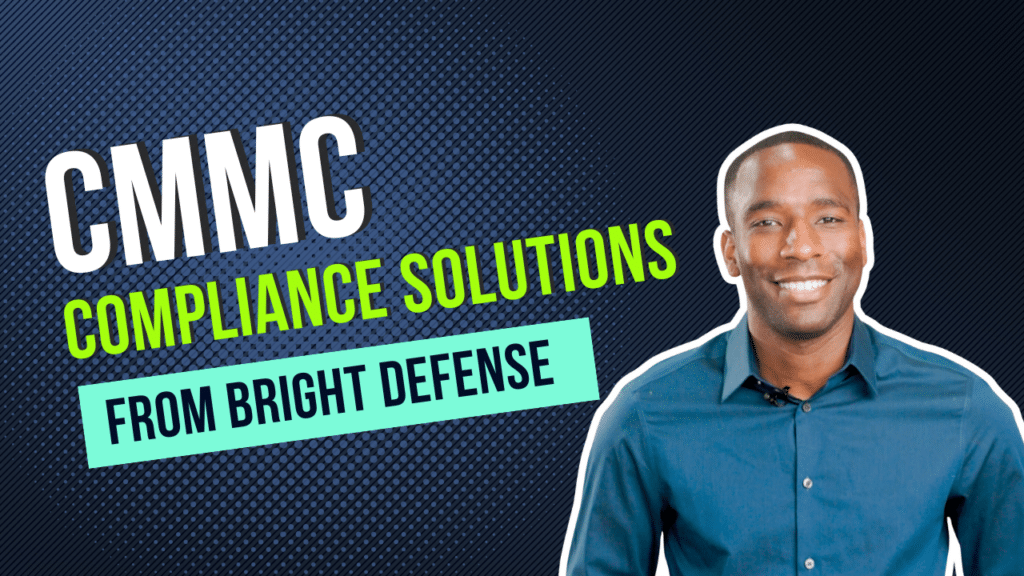
Tim Mektrakarn
February 16, 2025
PCI Compliance for Small Business: A Guide for SMB Owners
Introduction
In today’s digital world, protecting your customers’ payment information is more critical than ever. If you own a small business, PCI compliance isn’t just a suggestion—it’s a necessity. By ensuring compliance with the Payment Card Industry Data Security Standard (PCI DSS), you safeguard your customers’ data and build trust. This guide will walk you through what PCI compliance for small business entails, the upcoming transition to PCI DSS 4.0, and how your business can stay compliant.
What is PCI Compliance?
PCI DSS, or Payment Card Industry Data Security Standard, sets the baseline for securing credit card transactions. It applies to any business that handles credit card payments, regardless of size. By adhering to these standards, you protect sensitive cardholder data from breaches and fraud.

Understanding the Transition to PCI DSS 4.0
The PCI DSS standard is evolving, with PCI DSS 4.0 set to replace 3.2.1 by March 31, 2025. This update introduces more robust security measures and greater flexibility, especially for small businesses. Understanding these changes now will help you transition smoothly and avoid last-minute stress.
Common Misconceptions About PCI Compliance
Many small business owners believe PCI compliance is only for large companies, or that using a third-party payment processor absolves them of responsibility. These are myths. PCI compliance is required for all businesses that accept credit cards, and achieving compliance is an ongoing effort, not a one-time task. It’s essential to understand these misconceptions so you can avoid pitfalls and maintain compliance.
Another common misconception among small business owners is that using a third-party payment processor like Stripe, PayPal, Authorize.net, Square, or Toast automatically makes them PCI compliant. While these providers handle much of the heavy lifting when it comes to payment security, your business is still responsible for ensuring PCI compliance. This includes securing your own systems, networks, and processes that interact with these providers. Relying solely on a third party without taking necessary security measures on your end leaves your business exposed to potential risks and non-compliance penalties.

The Risks of Non-Compliance
Failing to comply with PCI DSS can have severe consequences. Financial penalties can cripple a small business, while reputational damage from a data breach can drive customers away. Additionally, you may face legal challenges if you don’t adequately protect your customers’ data. Compliance isn’t just a legal requirement; it’s a safeguard for your business’s future.
Key Requirements of PCI Compliance
To achieve PCI compliance for small business, you must adhere to several key requirements:
- Build and Maintain a Secure Network: Implement firewalls, secure configurations, and regularly update your systems to protect against threats.
- Protect Cardholder Data: Encrypt data both at rest and in transit, and follow best practices for storage.
- Maintain a Vulnerability Management Program: Regularly scan for vulnerabilities and keep your antivirus software up to date.
- Implement Strong Access Control Measures: Restrict access to cardholder data to only those who need it, and ensure each user has a unique ID.
- Monitor and Test Networks: Continuously monitor your network for suspicious activity and conduct regular tests to ensure your defenses are working.
- Maintain an Information Security Policy: Document your security policies and ensure all employees are trained on these practices.

Key Changes in PCI DSS 4.0 for SMBs
PCI DSS 4.0 introduces several changes that directly impact small businesses:
- Expanded Requirement Set: New security controls are now required, including more stringent authentication and encryption practices.
- Customizable Security Controls: PCI DSS 4.0 allows businesses to tailor security controls to their specific environment, providing flexibility while maintaining security.
- Focus on Risk Management: The new standard emphasizes risk-based approaches and continuous monitoring, helping you stay ahead of evolving threats.
- Documentation and Validation Changes: Expect enhanced documentation and validation processes to ensure ongoing compliance.
Steps to Transition to PCI DSS 4.0
Transitioning to PCI DSS 4.0 might seem daunting, but with the right approach, you can manage it effectively. Here’s how:
- Step 1: Assess Your Current Compliance: Review your existing security measures against PCI DSS 3.2.1 and identify any gaps.
- Step 2: Understand New Requirements: Familiarize yourself with the new requirements in PCI DSS 4.0 and how they apply to your business.
- Step 3: Update Security Policies and Procedures: Revise your policies to align with the new standard, ensuring all necessary controls are in place.
- Step 4: Implement Required Security Controls: Adopt the new security measures and ensure they’re fully operational.
- Step 5: Re-evaluate and Test: Conduct vulnerability scans, penetration tests, and other assessments to verify compliance.
- Step 6: Report Compliance with PCI DSS 4.0: Prepare and submit updated compliance reports to your acquiring bank or card brands.
Tips for Maintaining Ongoing Compliance
PCI compliance for small business isn’t a one-time achievement; it requires ongoing effort. Here’s how to stay compliant:
- Regularly Review Security Policies: Keep your security policies current with evolving threats and changes in the industry.
- Employee Training: Continuously educate your employees on security best practices and the importance of compliance.
- Perform Regular Audits: Schedule periodic reviews and audits to ensure you remain compliant with PCI DSS standards.

Tools and Resources for SMBs
To make compliance easier, take advantage of the tools and resources available:
- Online Resources: Visit official PCI DSS documentation, forums, and guides to stay informed.
- Third-Party Assistance: Consider hiring a consultant or using PCI compliance software to streamline the process.
- Templates and Checklists: Utilize downloadable resources to help you track your progress and ensure all requirements are met.
Conclusion
PCI compliance is vital for protecting your business and your customers, especially as the transition to PCI DSS 4.0 approaches. Start preparing now to meet the March 31, 2025, deadline and ensure a smooth transition. By staying compliant, you’re not just avoiding penalties—you’re building a stronger, more secure business.
About Bright Defense
Protecting your customers’ payment information is not just a legal requirement—it’s essential for your business’s reputation and success. At Bright Defense, we specialize in helping small and medium-sized businesses build and maintain robust information security programs that meet PCI compliance standards. Whether you’re looking to achieve compliance through self-attestation or require the expertise of a PCI Qualified Security Assessor (QSA), our team of experts is here to guide you every step of the way.
Don’t leave your business vulnerable to costly breaches or fines. Contact Bright Defense today to secure your path to PCI compliance and ensure your customers’ data is protected. Let us help you build a security program that not only meets industry standards but also instills confidence in your customers.
Get In Touch



